Digital Transformation: What Are the Challenges and Where to Start?
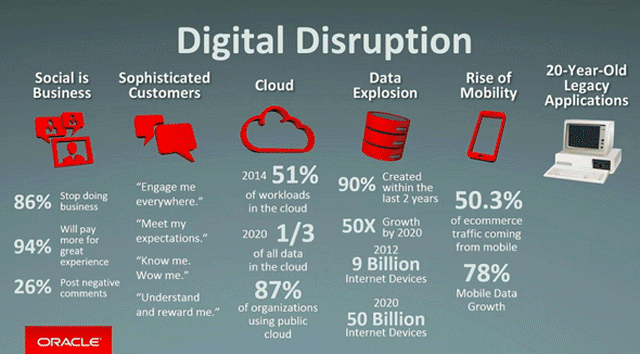
Why companies need to speed up innovation right now
‘Innovating faster’ is not another buzzword, but rather a matter of survival, as today’s business is highly competitive across most of the industries. Established companies are threatened by startups that are more agile by their concept and design. In addition, some organizations need to maintain legacy software that is neither able to satisfy their current requirements nor holds any potential for the future.
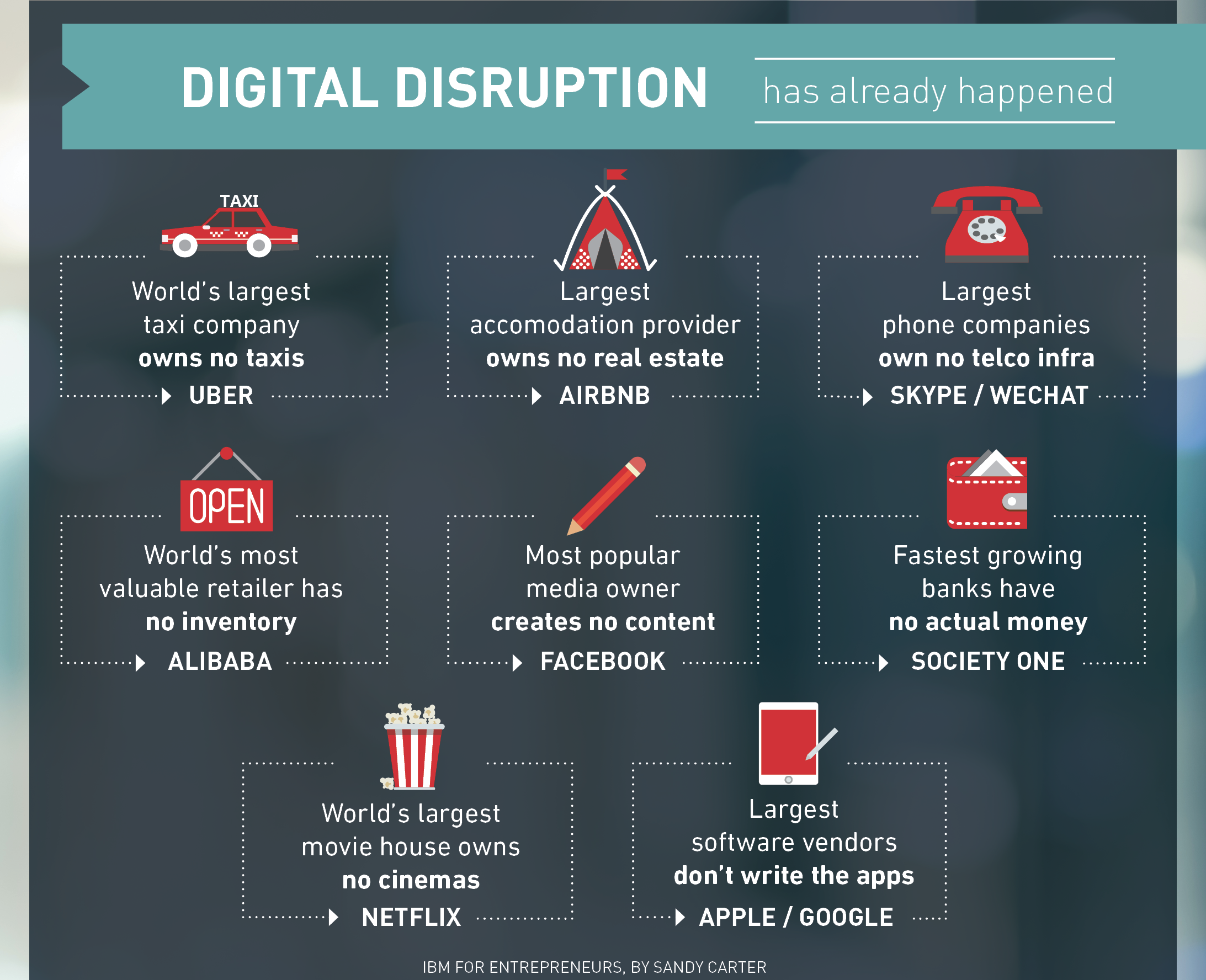 Famous industry disruptors (Image credit)
Famous industry disruptors (Image credit)From this perspective, large organizations look up to digital transformation as a way to invoke their disruptive powers and improve performance on a large scale. Typically, they rely on emerging technologies to reduce paperwork, automate industrial workflows, release innovative products, expanding to new markets, or improve customer interaction.
The idea of creating innovation labs—mostly, implanting many of startup principles—proved to be efficient for many companies.
An innovation lab can be understood as a team within an organization, aiming to improve operations, products, or customer experience with cutting-edge technologies. Mercedes-Benz/Daimler and Honda are just a few pioneers within the automotive industry that were successful in launching disruptive projects through innovation labs. Examples from the insurance and finance sector include the Royal Bank of Canada, Liberty Mutual, and Allstate. Major retailers, such as GAP, have directed steps that way, too.
The public sector did not stay on the sidelines, either—with governments of South Korea (through NIA), the USA (running 18F), and others—allocating dedicated resources to go digital.
Nevertheless, transforming an enterprise through an innovation lab is not so easy a path as may seem at first.
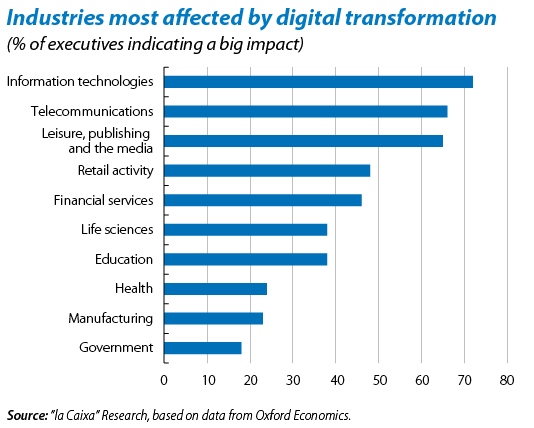 Image credit
Image credit
What makes transformation difficult?
Having set their minds on digital transformation, enterprises often feel confused where to start from. The situation is unsurprising, considering the array of challenges they have to address:
Adopting a proper technology requires a thorough evaluation of the impact that each emerging trend can have on an enterprise. However, at an early stage, ROI calculations are often too rough to rely on, since adoption cases are not numerous.
Lack of expertise in certain technologies and tools can become yet another hurdle to their adoption. Software engineers with relevant experience in emerging technologies may be a rare resource.
Furthermore, the enterprise IT is growing in complexity each year, with all the welter of legacy software, virtualized resources, and workloads it has to manage. Blockchain, machine learning, and Internet of Things (IoT) technologies are just a few components that are joining the mix of existing systems.
Another challenging task is identifying specific use cases to focus on. Disruption may encompass activities aimed at improving the quality of services and products delivered to end users, optimizing workflows to automate business processes or to minimize the human factor, creating new product niches for a business to grow and expand, etc. With limited resources, businesses are often at a loss to choose from the numerous opportunities and disruptive initiatives they can pursue.
In this endeavor, historical data can prompt the opportunities for launching disruptive projects. While processing big data is a challenge itself, its analysis may provide valuable insights into customer behavior or current bottlenecks. For instance, Honda managed to improve the interior design of its cars—with machine learning tools—by analyzing driver movements/complaints. Still, it may not be clear where to take this data from, which of the data should be analyzed, or how to ensure the information is up-to-date.
The existing organizational culture of an enterprise may impair transformation, too. Large enterprises often find it difficult to establish efficient communication between multiple departments and teams. The lack of coordination in the “hive” may result in redundant resources or projects going in totally different directions.
Responsibilities of executives are sometimes vague, which causes certain confusion around the question who is to be in charge of implementing digital transformation. In addition, reluctance to change—both on the management and employee levels—can substantially slow down innovation. Many people are afraid to lose their paychecks or change the way they used to work for years.
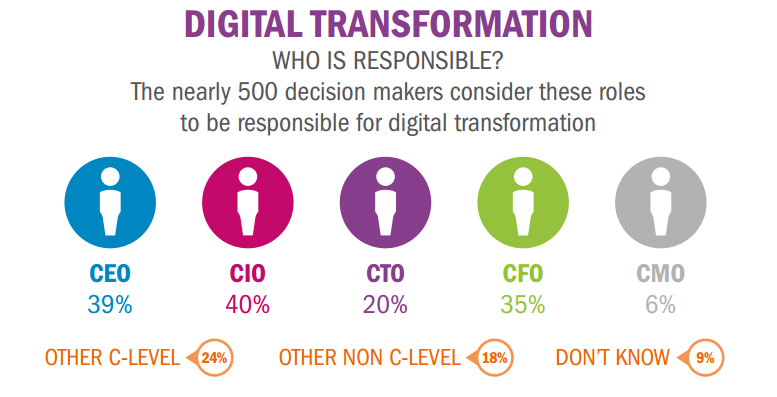 Executives uncertain about their roles in digital transformation (Image credit)
Executives uncertain about their roles in digital transformation (Image credit)In such an environment, projects are bound to run without the required scale, often overlapping and, at times, obstructing each other. Consequently, the output—if one is lucky enough to bring a project to a happy ending—may be way less impressive than expected.
Legacy systems are also a burden that enterprises have somehow to carry all along the way to transformation. It is heavy, of course, and getting heavier over time, but is too expensive to just throw it off the shoulders, worth millions of dollars. The use of outdated technologies, platforms, and systems (sometimes, even mainframes) aggravates the problem of integrating new solutions. So, introducing innovations into a legacy environment may require additional investments.
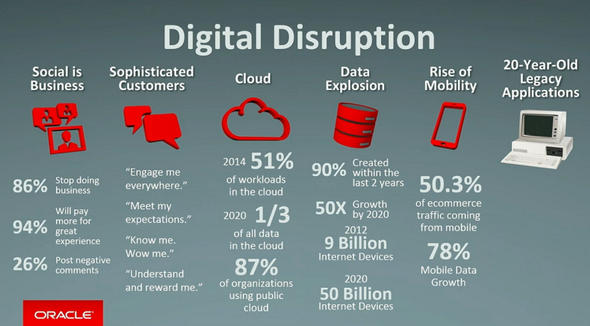 Technology trends pushing digital transformation (Image credit)
Technology trends pushing digital transformation (Image credit)
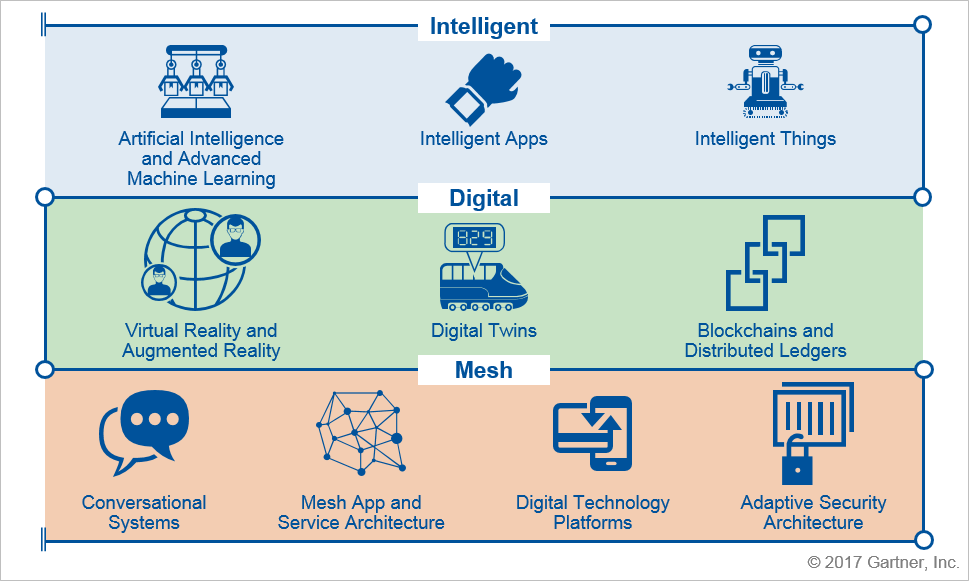 Top digital transformation trends (Image credit)
Top digital transformation trends (Image credit)In addition to the issues mentioned above, many other surveys (like this one or this one) reveal additional challenges impairing digital transformation:
- Difficulties with calculating transformation’s ROI may lead to insufficient budget allocation.
- With any new change, there are concerns about data privacy and security.
- Risk management and things like compliance also need to be taken into consideration.
What can you do about it?
With all the “noise” around innovative technologies and associated challenges, an innovation lab first needs to develop a clear vision for implementation of its transformational initiatives.
The schema below is an example of how a digital transformation vision may look like for an insurance company. The diagram covers the most essential technology components needed for automating the workflows within an enterprise. The flow chart is quite large and complex (and so it should be), therefore take a look at its full-size view and an extended version for details.
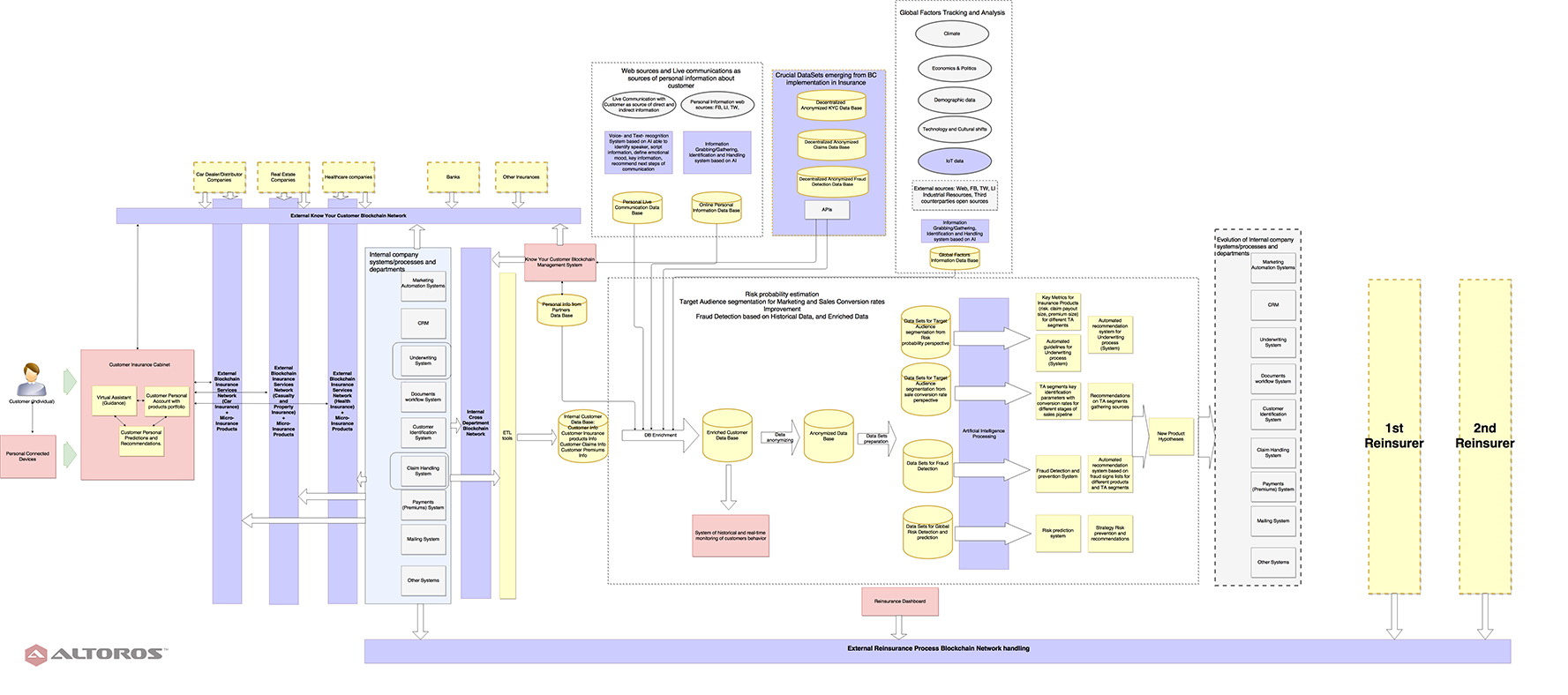 Digitizing workflows for an insurance company (view a full-size or an extended version)
Digitizing workflows for an insurance company (view a full-size or an extended version)Based on a clearly defined vision, one can craft a transformation roadmap, identifying specific use cases and milestones—arranged in an order of impact significance and investment priority. This will help to better understand the potential of emerging technologies, estimate the possible cumulative effect, and develop a three-year strategy—forming the necessary teams and shaping a required organizational structure.
With a strategy and a roadmap outlined, an enterprise should also adopt a proper methodology. It should specify how you proceed from an idea to releasing a product into production, as well as how to evaluate achieved improvements and return on investment.
As you can see, issues with digital transformation are almost just as numerous as opportunities it offers. However, changes are unavoidable, and the question is whether you will be fast enough to adapt or will get disrupted.
Let us know if you need more of the vision blueprints like the one presented above—we’ve already created some for logistics, automotive, manufacturing, energy, and retail. We are open to feedback from companies that also work in these areas—or to your ideas about other technology components that may drive a successful digital transformation.
Further reading:
- Initiating Digital Transformation: Nobody Wants to Get “Ubered”
- Digital Transformation with Cloud Foundry: Most Prominent Examples








